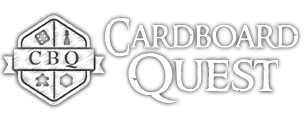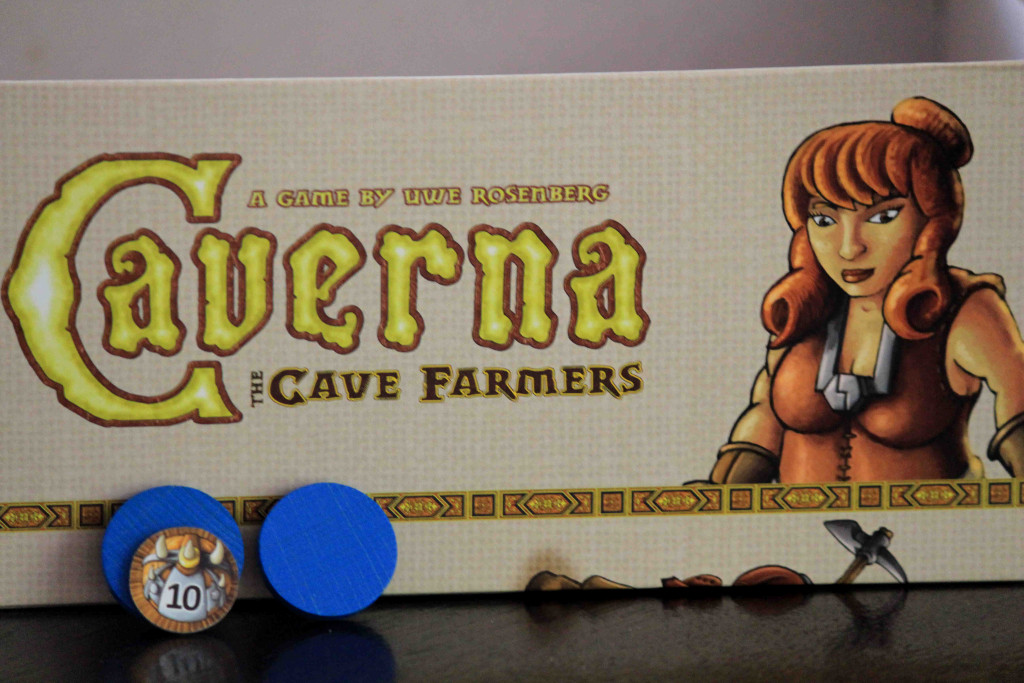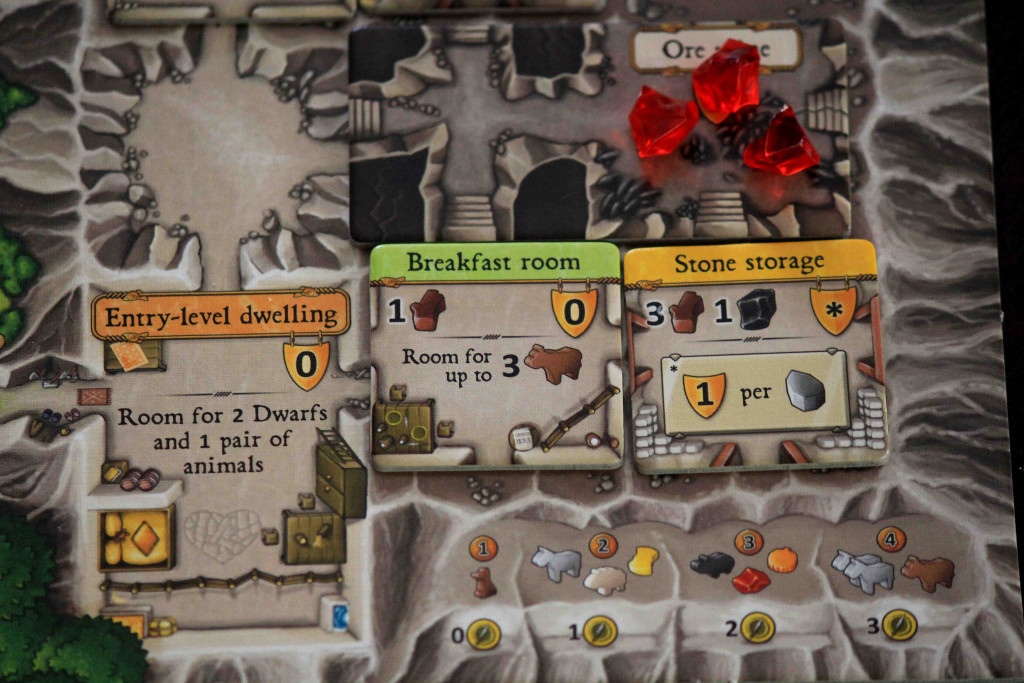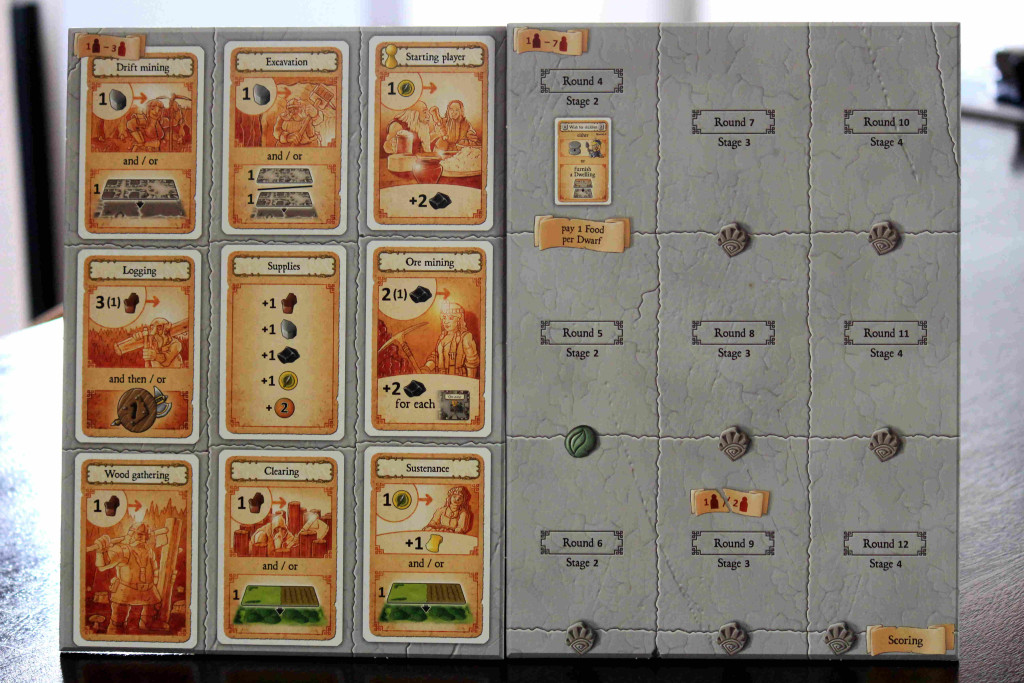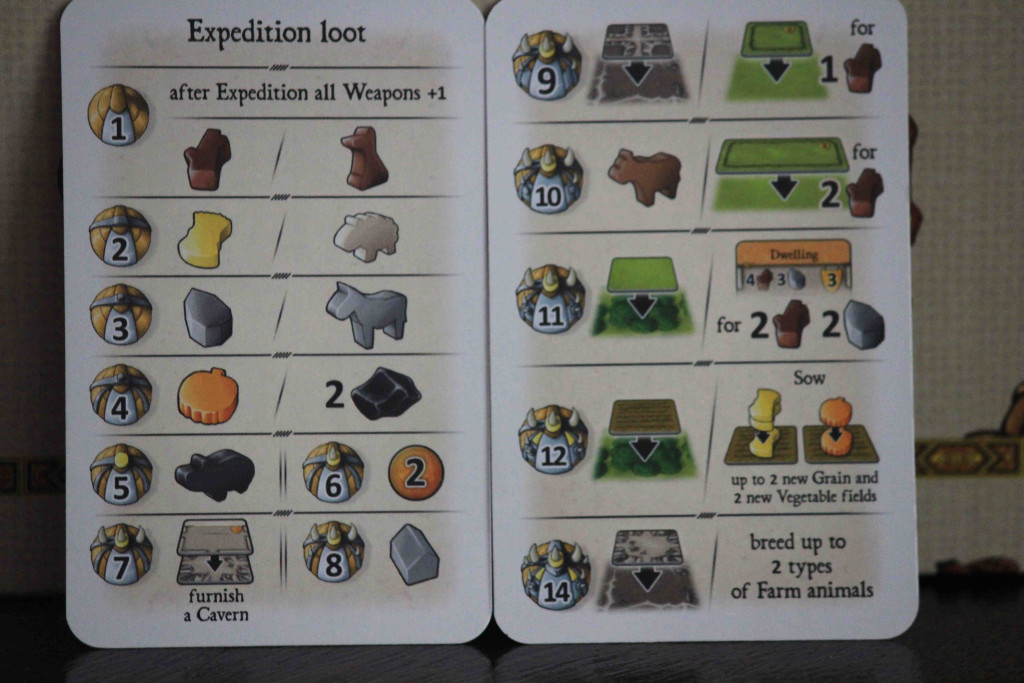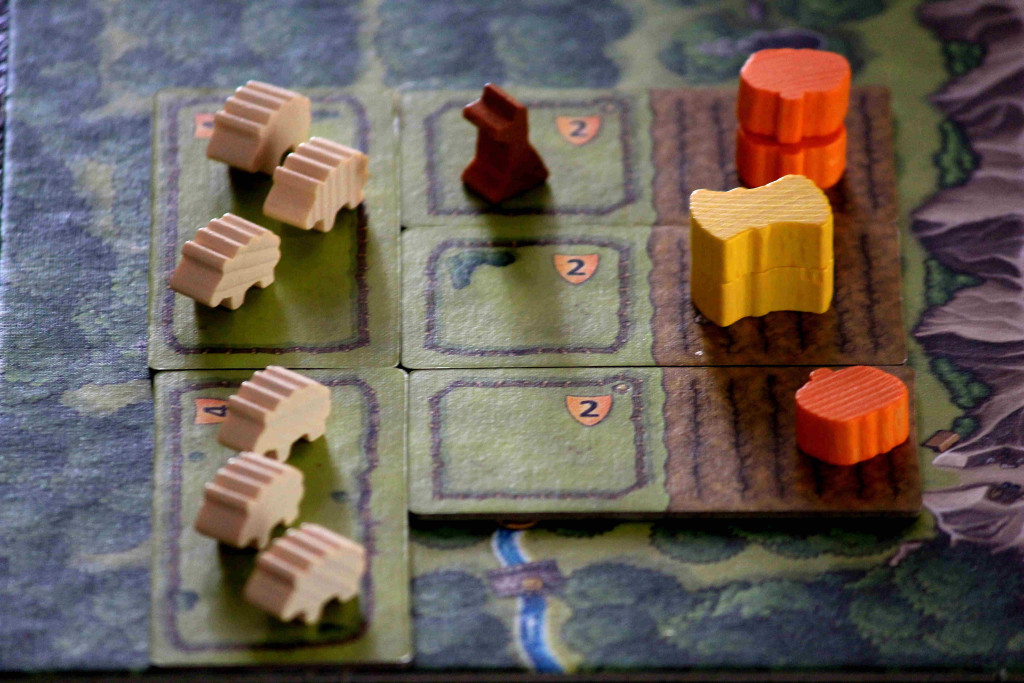Caverna: The Cave Farmers Review
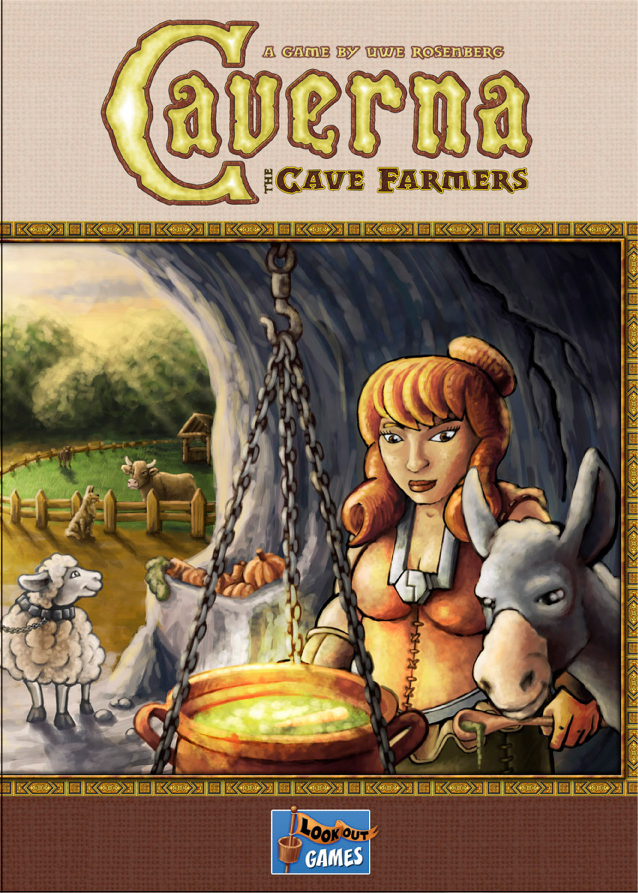
What is it?
Caverna is like Farmville, only with depth, fun, and not a trace of self-loathing. Okay, so it's not at all like Farmville. Guide your family of bearded dwarves as they attempt to make a life for themselves by farming the land and carving out a lavish home within the mountains. Mine for gems, breed livestock, cultivate crops or forge a mighty weapon to adventure into the wild unknown.
Also, Caverna is infinitely more fun if you pretend your dwarves are in fact Hobbits. Farming potatoes. PO-TA-TOES.
Kevion Redshale lingered for a moment in the cave’s entrance. Behind him, in the torch-lit depths of the cavern, the muggy air carried with it an aromatic trace of hops from the Beer parlor. The sonorous rumble of fluctuating snores seemed to echo from as far down as the Ruby mines, but its origin was more likely the Couple dwelling – Mom and Pop Redshale had elevated their nocturnal symphonies of sound to an art form. Just below the snoring, the rustling of sheep in the Cuddle room, the melodious clang of cowbells in the Milking parlor.
As the sun slipped the horizon’s thread, Kevion could feel the light spilling in from the pastures outside. This was looking to be a more arduous harvest than the Redshales could afford, and he knew someone would have to venture beyond the security of the valley if their fortunes were to change. Pop was going to be mad – he’d been insistent that Kevion plough the fields that morning. But they had to look to the unknown now. Kevion buckled his backpack, slid his axe of Weapon strength 9 into his belt, and with one last glance toward home, he set off.
Caverna entered the board game arena like a younger brother entering high school, the legend of his overachieving brother echoing through the corridors. In this tale of anthropomorphism, Agricola is that older brother – Prom King, Football Captain, Science Fair Winner. Caverna certainly looks like his older brother, an abundance of wooden meeples and tiles and cards, with that same genial farm-style aesthetic. And inevitably, expectations were set, bars were raised and legacies demanded to be lived up to.
And if we are to believe that the Great List from On High at Board Game Geek is indeed the final proclamation of a game’s worthiness, Caverna has truly become the most favoured of Uwe’s sons. However, we here at Cardboard Quest view board game rankings in the same way Captain Barbossa sees the Pirate’s Code – the rankings are more what you’d call “guidelines” than actual rules. So I promise, this review will refrain from describing Caverna as Agricola 2.0, because it just isn’t.
What is Caverna then? Picture it – you and your beloved Dwarven bride, as is apparently customary for this tribe, have inherited an enchanting section of land. A craggy slate mountain looms over an untouched valley, an emerald forest of trees that blankets the fertile ground. And you’re going to chop it all down. To plant an organic, self-sustaining farm, of course – you’re not some kind of barbarian! You’ve located the makings of the perfect home in a nearby cave, and have already carved out a make-shift dwelling. The sooner you get to cultivating the land, the better – but deep within the heart of every dwarf, beats the soothing tattoo of pickaxe against stone. Will your true nature win out?
Well, the answer is…that’s the genius of Uwe Rosenberg’s design! You can propagate your farm toward the furthest corner of the valley, prove once and for all that a dwarf is as gifted above land as he is under it. Or, you can dig deep into the heart of the mountain, creating a network of tunnels and mines and specialty rooms that will bequeath riches beyond your wildest dreams. Or, you can do a bit of both. It really is up to you. How then do you achieve greatness? Good ol’ worker-placement, of course.
Caverna has a multitude of boards, so let’s break those down first. At the start of the game, each player receives a Home board – half valley area, half cavern area. Then, depending on the player count, various game boards containing the worker-placement action spaces and lastly, a supply board, which holds the Furnishing tiles. Players will also adopt two dwarves, and receive a miserly sum of food – not much with which you are expected to survive the year (12 game rounds)!
Gameplay is worker placement at its simplest – players alternate placing dwarf workers on an action space, and executing the related activity. At the end of certain rounds, a Harvest phase occurs which provides players with an additional set of actions. The majority of available actions are carried out within a few seconds, which means that the wait between turns, even at five and six, is negligible. Even those actions which require players to follow a few extra steps, can be carried out while the next player is taking their turn.
So what sorts of actions are we talking here? The basic building resources are wood, stone and ore, all of which are generally available from multiple action spaces. Players may also choose to excavate/clear a section of their forest/cave area by placing a Meadow/Field tile or a Cavern/Tunnel tile. Meadows are the building blocks for eventual Pastures which can house farm animals, Fields allow for the planting and harvesting of grain and vegetables. Alternatively, Caverns allow players to utilise Furnishings, whilst Tunnels will eventually become ore or ruby mines.
At the beginning of each round, various resources are placed on their requisite action spaces, and any resources not claimed carry over to the next round. This is standard practice as far as worker-placement goes – at some point the deluge of resources on an oft neglected tile will tempt players, though this isn’t always the smartest move. If they’re basic resources, that is. Advanced resources constitute rubies, gold and food. Rubies and gold are valuable as a wild resource (they can be exchanged for quantities of other resources), and food is necessary to avoid starvation.
Those additional end of round actions I mentioned earlier? That’s called the Harvest phase, and the good news is that you can harvest your sown fields and you can breed with your acquired livestock. The bad news? Your family needs to eat, and since it’s possible to bear children who eventually mature to helpful young sons and daughters (i.e. additional workers to use for actions), you’ll need plenty of food to keep famine at bay.
Two last aspects that require a brief description: Expeditions and Furnishings. Expeditions are simple in execution, but hold a tremendous strategic value when astutely utilised. Craft a weapon, attach that weapon to one of your dwarves, and you can send them out on an adventure. These yield loot corresponding to the strength of your weapon. At higher levels, Expeditions provide access to specific tiles and resources which may otherwise have required two or three rounds worth of preparation.
Lastly, Furnishings. Caverna comes with over 47 unique Furnishing tiles, and to aid in preventing AP for new players there’s an introductory option which uses only a portion of these tiles. Furnishings provide powerful bonuses, anything from end-game boosts to scoring, to engines for ensuring feeding your family is less of a headache. The Beer parlor let’s you trade grain for gold or food, the Treasure chamber makes each of your rubies worth one additional victory point, to name but a few.
At the conclusion of the twelfth round, scores are tallied. Players score points for quantity of livestock, crops, bonuses for furnishing tiles and mines etc, but negative points are received for missing certain types of livestock, or for any open spaces on your Home board. One of Caverna’s many risk/reward opportunities is the mitigation of negative points – the natural inclination is to avoid negative points completely, but the actions taken to avoid this predicament are often deceptively less than optimal.
Think of it as being similar to the Opportunity Cost of money – every decision made has to be weighed against the benefits of having made an alternative decision. Use an action to gain a cow so that you avoid the -2 penalty, but give up the action which may have netted you three rubies (rubies are worth a point each). What is the true impact of your decision? Farm animals are worth a point each, so the gain a cow action would net you one point and prevent the loss of two. Choosing the three rubies would net you three points, but you’d lose two for not having any cows. So both decisions are actually the same? Well, a cow can be converted to three food, whilst a ruby only two, but rubies can be exchanged for a host of other resources.
And it’s precisely these decisions that make Caverna such a tremendously satisfying experience. Worker placement games require two key aspects to ensure success – players should be able to recognise and implement a long-term strategy early on, but that strategy should be malleable and reward players able to adjust on the fly. Caverna finds that perfect balance between encouraging players to plan for the future, and yet allowing players the freedom to adopt a strategy that fits their style.
If you’re the type who enjoys interfering with your opponents best laid plans, what seems to be an absence of player interaction in Caverna is in reality a far more subtle playground for your nefarious intent. Keeping an eye on the manner in which players furnish their caves gives an indication of their strategies, and since there’s genuinely no such thing as a wasted resource, starving opponents is certainly a viable approach. Conversely, if you find yourself on the receiving end of a spanner in the works, it’s almost always a temporary stumbling block rather than a ruination.
But you’re equally welcome to approach the game with a less villainous attitude, losing yourself in the elementary joy of running your own farmstead – and yet your path to victory is no less accessible. The consequence of Uwe’s more generous design, is that Caverna lacks the a degree of tension found in many other of his games. There’s something to be said for the anxiety present in a strategy that balances upon a knife’s edge, the creeping fear that one wrong move, one wayward assumption, and victory will slip through your fingers.
Caverna’s greatest strength, is that it wants players to enjoy the game not on its terms, but on theirs. Indulgent, tactical, clandestine – whatever your approach, this is the quintessential modern Euro.
At Cardboard Quest, we view review scores as a rather arbitrary attempt at pinning a rather meaningless number to enjoyment. It’s an exercise in futility. Instead, we’ve implemented the Own/Loan/Groan scale. Own, as you might guess, indicates a CBQ stamp of glorious approval. Loan is reserved for those Marmite like games that may hold value to the right gamer, and Groan is really just our unanimous glare of displeasure. Let’s hope for as few Groans as possible.
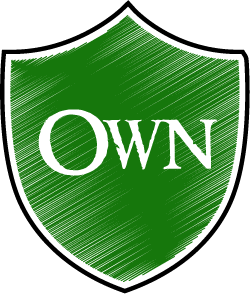
Pros:
- Fantastic components
- Multiple paths to victory, yet easy to learn and with little downtime
- Modular difficulty means new players aren’t overwhelmed
Cons:
- At six and seven it’s a table killer
- Pricey
-
Morne Schaap
